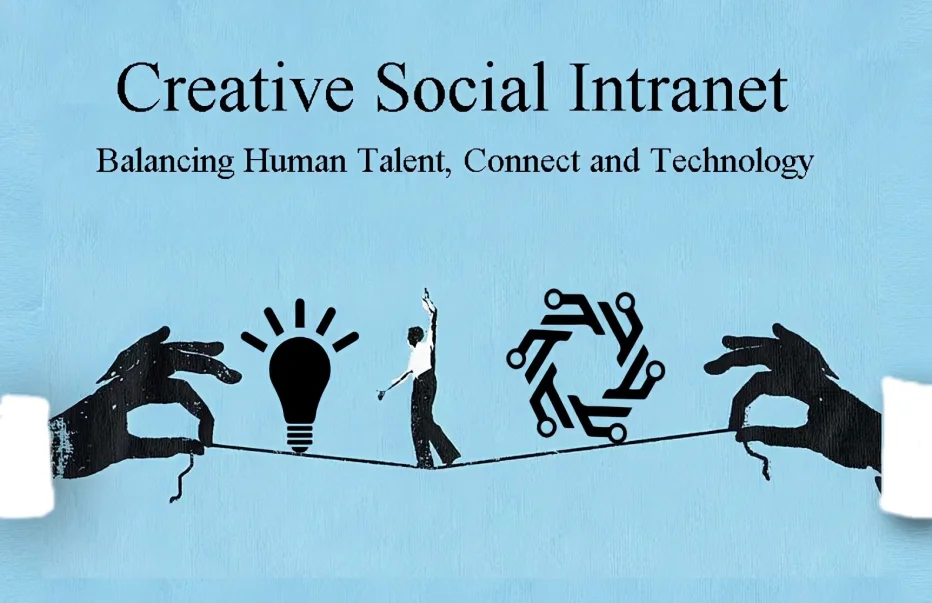Contrary to a company’s website over the Internet where products and services are being sold, the intranet is focused on the internal working of an organization. In the system, data from the people within the private network is collected, stored, and distributed to meet a common business objective.
Intranet applications allow a company’s employees to communicate, share data, and work on projects while staying within the network. Such apps or intranet software have features like live conversation, employee management, data sharing, content management, and various other activities related to an organization.
Development of Intranet Software
When it is about developing intranet software for organizational purposes, a company needs to formulate a strategy where things like ‘use of social intranet’ and ‘people going to use it’ are considered. In addition, business objectives and requirements are also considered by the company’s top management.
Developing intranet software for organizational purposes involves several key steps and considerations to ensure it meets the specific needs of the organization. Here’s a general overview of the development process:
1. Identify Requirements:
Work closely with stakeholders to identify the organization’s requirements, including features, functionalities, security needs, and user roles.
2. Design Phase:
- Information Architecture: Plan the structure of the intranet, including navigation, content organization, and user interfaces.
- Wireframing and Prototyping: Create wireframes and prototypes to visualize the layout and functionality of the intranet, allowing for feedback and adjustments before development begins.
- Choose Technology Stack: Select the appropriate technologies and tools based on the project requirements, considering factors such as scalability, security, and compatibility with existing systems.
3. Development:
- Frontend Development: Build the user interface and client-side functionalities using HTML, CSS, JavaScript, and frontend frameworks like React or Angular.
- Backend Development: Develop the server-side logic, database management, and integration with external systems using programming languages like Python, Java, or Node.js and frameworks like Django or Spring Boot.
- Integration: Integrate third-party services or APIs as needed for features such as authentication, document management, or communication tools.
- Security Implementation: Implement robust security measures to protect sensitive organizational data, including user authentication, access control, encryption, and regular security audits.
4. Testing:
- Unit Testing: Test individual components and functionalities to ensure they work as expected.
- Integration Testing: Test the integration of different modules and components to verify system behavior.
- User Acceptance Testing (UAT): Involve end-users in testing to gather feedback and ensure the intranet meets their needs and expectations.
5. Deployment:
- On-Premises or Cloud Deployment: Decide whether to deploy the intranet on-premises within the organization’s infrastructure or in the cloud using platforms like AWS or Azure.
- Configuration and Setup: Configure the intranet environment and perform necessary setup tasks, including data migration if applicable.
- Training and Adoption: Provide training and support to users to familiarize them with the intranet’s features and encourage adoption within the organization.
- Maintenance and Updates: Regularly maintain the intranet by addressing bugs, implementing updates, and adding new features based on feedback and evolving organizational needs.
- Monitoring and Optimization: Monitor system performance, user engagement, and security metrics, and optimize the intranet as needed to ensure it continues to meet organizational objectives effectively.
Intranet software for organizational purposes may include various components, such as:
- A company directory where details of employees and their employee IDs will be available for other employees.
- A page for company employees where they can share files and data with other people in the organization.
- Forum and content repository where employees can discuss their ideas with each other.
- A staff collaboration feature where employees can talk to each other.
- Login Page Feature: Capture attention right from the start by uploading one of the banners to the login page of your intranet. This ensures that every user is greeted with the spirit upon accessing the platform.
- Dashboard Main Banner Slider: Highlight the banners in the main banner slider of your intranet’s dashboard. Rotating through these images ensures maximum visibility and engagement among your employees.
- Event Promotion: Create an event in the Events widget and use one of the banners as the event image. This will help generate excitement and participation among your team members.
- Photo Gallery Inclusion: Add the banners to your intranet’s Photo Gallery section, providing employees with a visual archive of the celebrations and inspiring moments.
How Creative Web Mall Can Help?
A social intranet platform is beneficial for a company only when it is user-friendly, easy to use, and has a customization feature. Apart from that, the software must be secure and usable on any kind of device. Creative Web Mall can help you launch advanced and effective social intranet software within your budget. The company has experienced developers to meet your private network requirements.
